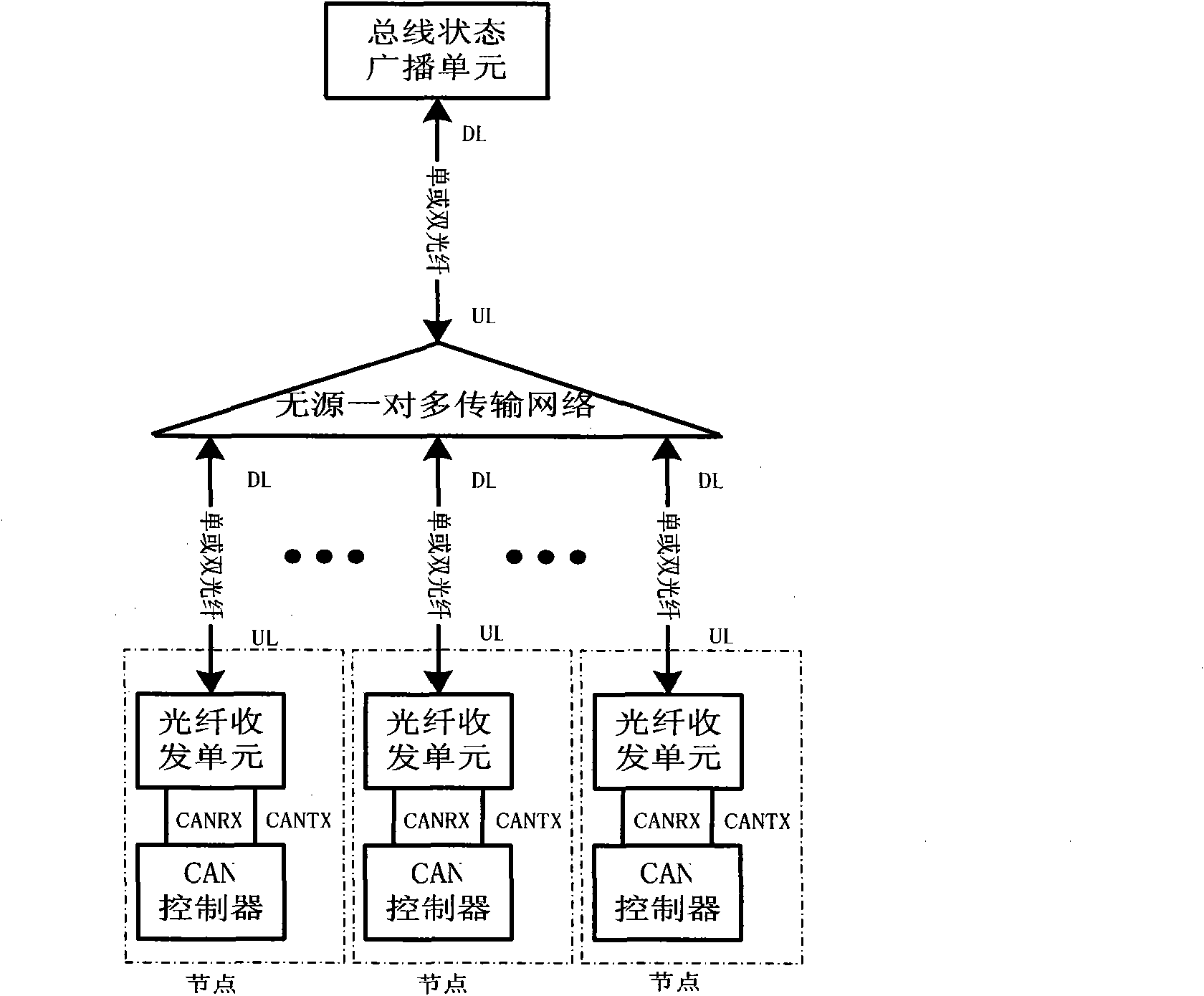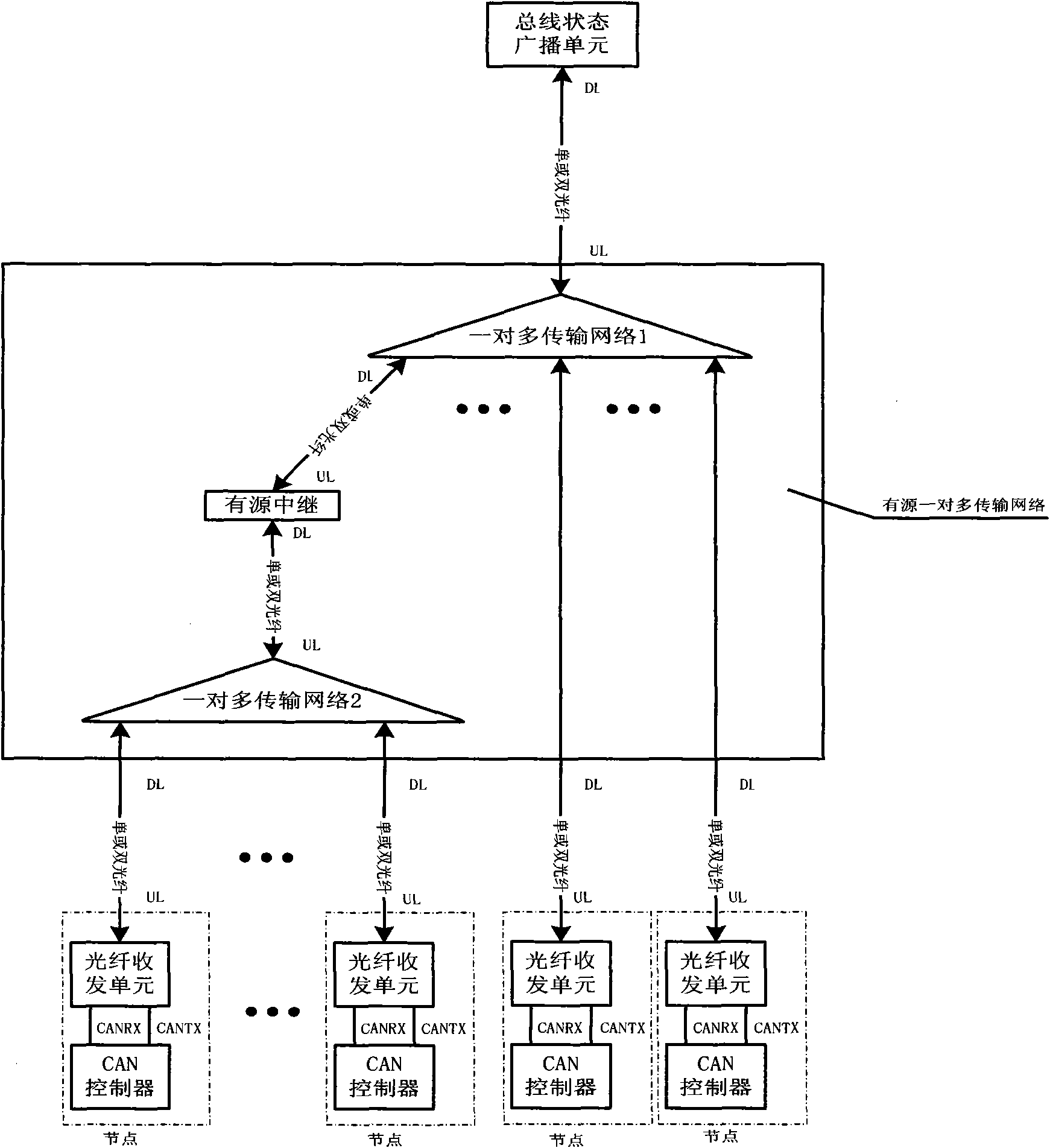CAN bus physical layer structure based on 1XN passive optical splitter (POS)
A CAN bus and splitter technology, applied in the field of CAN bus physical layer structure, to achieve the best anti-electromagnetic interference characteristics, increase the maximum transmission rate, and achieve the effects of wide network geographical distribution
- Summary
- Abstract
- Description
- Claims
- Application Information
AI Technical Summary
Problems solved by technology
Method used
Image
Examples
Embodiment 1
[0029] Embodiment 1: as figure 2As shown, the CAN bus physical layer structure based on 1×N passive optical splitter of the present invention is successively a bus state broadcast unit, a passive one-to-many transmission network, and some CAN nodes from top to bottom. Connections can be made using single or dual fibers. The function of the bus status broadcasting unit is to obtain the bus status belonging to all CAN nodes, and then send the bus status of the CAN nodes to all CAN nodes. The DL port of the bus broadcasting unit is connected to the UL port of the one-to-many transmission network. The bus broadcasting unit receives the uplink optical signal from the DL port, copies it into a downlink optical signal, and then transmits it downward through the DL port. Its reproduction method can be active or passive. The specific connection method is as follows: the downlink optical port DL (DOWN LINK) of the bus state broadcast unit is connected to the uplink optical port UL (U...
Embodiment 2
[0033] Embodiment 2: When the passive one-to-many transmission network cannot handle the scale or distance of CAN nodes, an active relay can be introduced. Such as image 3 As shown, the CAN bus physical layer structure based on 1×N passive optical splitter of another embodiment of the present invention is the bus state broadcast unit, one-to-many transmission network 1, active relay, one-to-one Multi-transport network 2 as well as some CAN nodes. Other structures are the same as those described in Embodiment 1, except that there are more active relays between two one-to-many transmission networks. Such as image 3 As shown, the active relay is between the one-to-many transport network 1 and the one-to-many transport network 2 . That is, between the downlink optical port DL of the one-to-many transmission network 1 and the uplink optical port UL of the one-to-many transmission network 2 . And the one-to-many transmission network may be an active one-to-many transmission ne...
PUM
 Login to View More
Login to View More Abstract
Description
Claims
Application Information
 Login to View More
Login to View More - R&D
- Intellectual Property
- Life Sciences
- Materials
- Tech Scout
- Unparalleled Data Quality
- Higher Quality Content
- 60% Fewer Hallucinations
Browse by: Latest US Patents, China's latest patents, Technical Efficacy Thesaurus, Application Domain, Technology Topic, Popular Technical Reports.
© 2025 PatSnap. All rights reserved.Legal|Privacy policy|Modern Slavery Act Transparency Statement|Sitemap|About US| Contact US: help@patsnap.com



